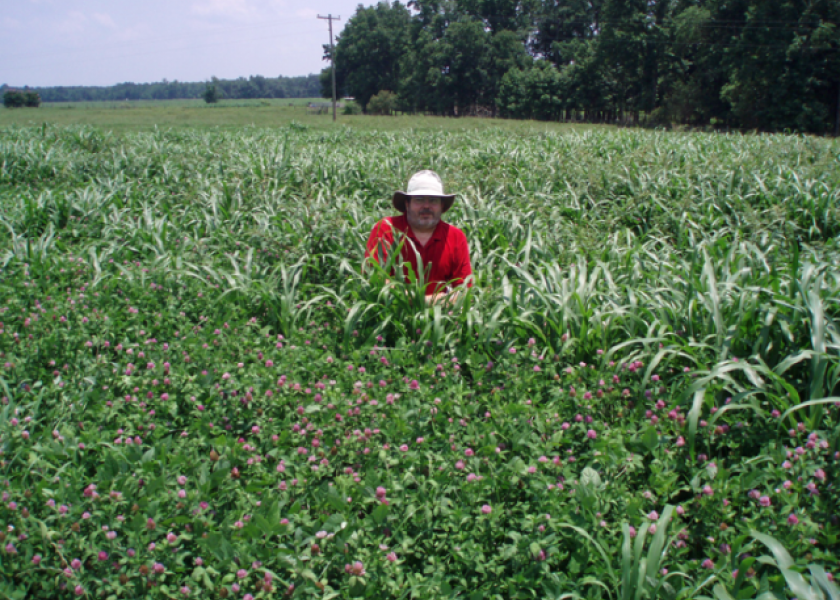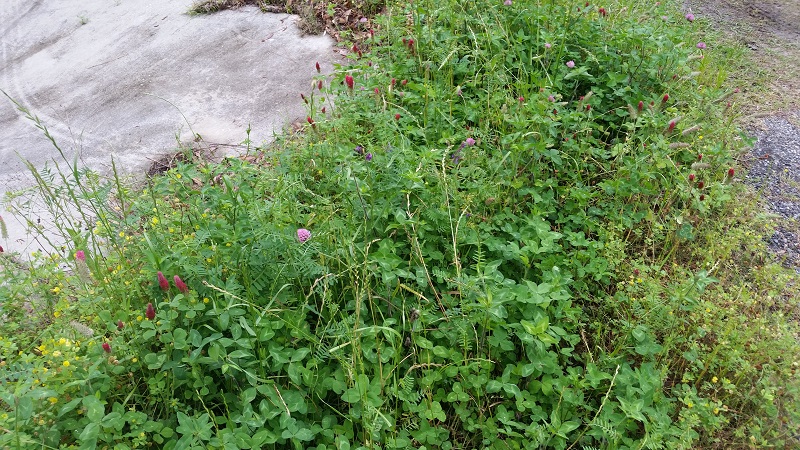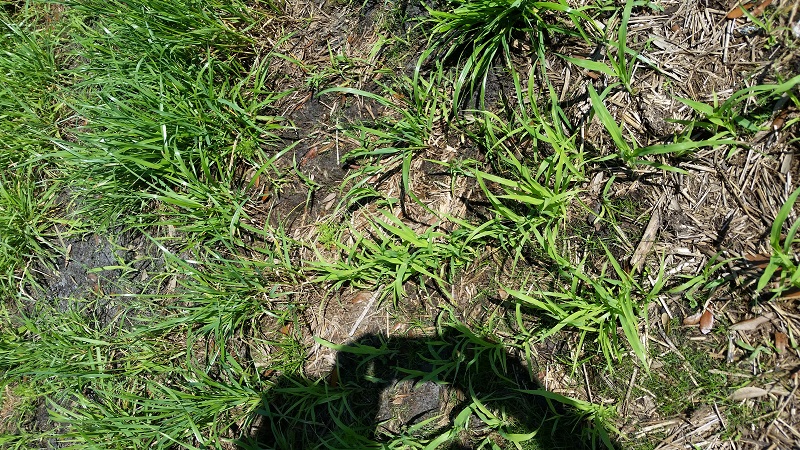More Grazing Dishes for the Summer Salad Bar

By: Jed Dillard, University of Florida Extension
We’ve heard “North Florida can grow forage 365 days a year!” for ages, and that’s true. However, those of us who’ve carried livestock through more than one winter with our own money, or worse, a bank’s money, know that it’s just not that simple. The long-time goal of getting grazing from fall seeded winter annuals by Thanksgiving seems as elusive as Bigfoot in many years. Records from state climatologist, Dr. Dave Zierden, show May has become increasingly dry over the years
Typical forage programs are based on Bermuda or Bahia grasses and some type of winter supplement such as hay, commodity feeds, protein feeds, or winter annuals. Of course costs vary, and each operation has a unique set of resources, requirements and opportunities. Use your head and your pencil to decide what works best for your situation.
One of the more common strategies is to graze winter annuals as protein and energy supplements, either on a prepared seedbed or overseeded on permanent pastures. Prepared seed beds work best for cereal grains (Oats, rye, triticale, wheat), and clovers and ryegrass are preferred for overseeding. However, clover and ryegrass can be also combined effectively with cereal grains to extend the grazing season on prepared land.
Generally, grazing crops on prepared land is converted to cash crops in the spring. Corn ground goes first, followed by peanuts and cotton. Soybeans and sorghum can go in early or late. If row crops aren’t in the immediate future for your land, what are your options as the days warm and dry weather hits you in May? I’ve seen a variety of options recently. Take a look and see if these might work for you, especially as you plan for next year
Clover Mixtures
Take advantage of the complementary growth periods of clover and other cool season legume varieties. The peak production begins with common vetch followed generally by crimson clover, ball clover, hairy vetch, arrow leaf clover, red clover and white clover. All these can be broadcast into dormant or short permanent pasture. Figure 2. shows a mixture of legumes that were broadcast into Bahiagrass that already had ryegrass and crimson clover reseeding in it. The mixture includes, common vetch, hairy vetch, arrow leaf clover and Osceola white clover; the photo was taken in mid-May. The white and arrow leaf clover and white clover are still going today, and red clover would have extended the blend even further.

Figure 2. A broadcast mix of legumes in Mid-May Photo Credit: Jed Dillard
Crabgrass
The bane of row crop farmers and a primary source of income for the lawn pesticide industry, crabgrass fills one of our grazing gaps as winter annuals play out on prepared seedbeds. It can last into August with decent rainfall and fertility. It’s a high quality forage and frequently is already a part of the seed bank in many North Florida fields. Improved varieties of crabgrass are available. Hay growers won’t want it as it doesn’t dry at the same rate as Bermuda, but grazers should capitalize on the opportunity. Clovers and crabgrass are the simplest options to implement for the May – July window, but overseeding with a no-till drill opens up several more options on winter annuals that were planted on prepared land.

Figure 3. Tifleaf 3 Millet emerging in Oats and Clover in Late April Photo Credit: Jed Dillard
No Till Annuals
Pearl millet is the most common summer annual in our area, and the photos show two approaches. Figure 3. shows millet coming up in oats and clover in late April. This approach provides continuous availability of high quality forage, but requires the ability to use grazing to manage the competition between the two plantings. Close grazing of the growing crop allows the emergence of the millet. After emergence and during the transition to millet grazing, management must find the balance between allowing the millet enough light and grazing the millet too hard, too soon. Figure 4. was taken in early June shows a field of Southern Bell red clover with Tifleaf 3 millet and iron clay peas no tilled into it. With proper grazing management, this mix can last into late summer. These options run the gamut from requiring hardly any equipment to the use of high dollar no till drills, and you need to make your own financial decisions based on your own financial situation.

Figure 4. Allen Skinner, Suwannee County in millet, cow peas and red clover in early June. Photo Credit: Joel Love
As you examine your situation think of these questions:
- Does a no till drill cost more than a hay baler, cutter, rake and fluffer?
- How many times would you need to go over your land per year with a no till drill versus a hay baler, cutter, etc.?
- Would I rather my livestock harvest my forage, or would I rather cut, rake and bale it, haul it to the barn and then haul it back to my livestock?
- Would I rather grow more of my nitrogen with legumes or buy it?
Growing forage 365 days a year? Check. Growing good forage economically 365 days a year? More thinking, maybe more work, maybe more money. These aren’t easy production decisions, and they’re even more complicated economic decisions. For further information on variety selection, seeding options, and financial considerations contact your local Extension Agent and/or see the following related UF/IFAS Publications:







